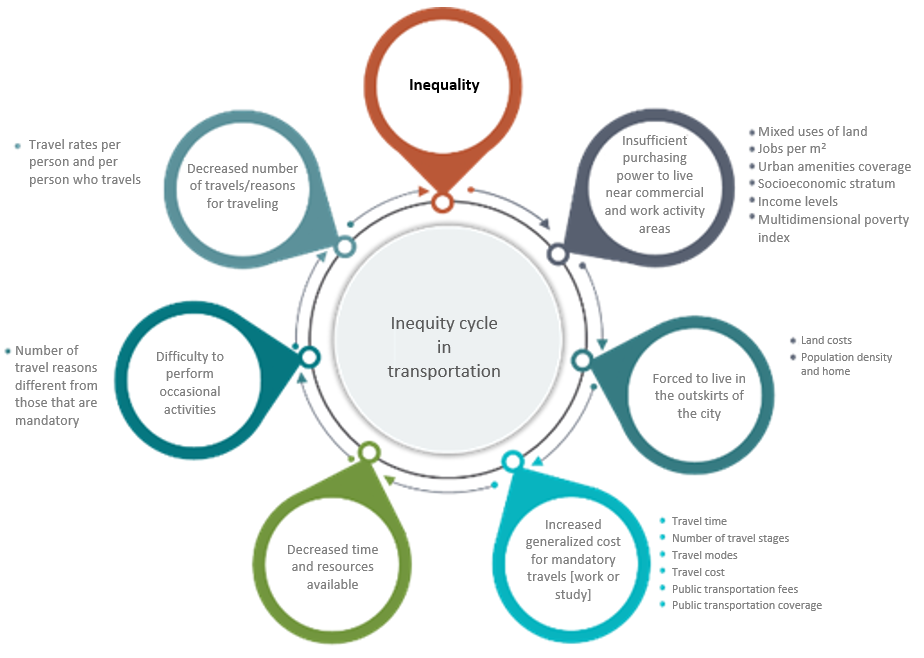Equity is a guiding principle for public entities action. This principle does not only seek equality for people before the Law or the State, but also guaranteeing equal conditions acknowledging diversities in the population. The National Development Plan 2018-2022 “Pacto por Colombia, pacto por la equidad”, (“Pact for Colombia, pact for equity”) is within the framework of this concept, which places it in the agenda of national entities. For this reason, in September 2020, the National Department of Planning hired Steer to analyze the role of mass public transportation with respect to the concept of equity in the cities in order to provide public policy recommendations regarding public transportation and urban planning.
In the development of this project, the analysis focused on the conceptual relationship between equity and other key terms such as inequality, spatial justice, and social exclusion, as well as on the role that public transportation plays in people’s access to opportunities offered by the cities, hence how their planning, considering particular aspects from the most vulnerable populations, may contribute to reduce social gaps and improve the economic development of the cities.
Thus, in the first stage, the hypothesis proposed was the vicious cycle of inequality origination associated with transportation, a result of inequitable measures which essentially establishes that:
- People with less purchasing power are compelled to live in the outskirts of the cities, where the land costs are lower, but also where opportunities and services offered are scarcer.
- Living away from opportunities implies increased commuting times and costs for people in order to go to their places of study or work daily.
- Using more time and money for performing mandatory activities limits the remaining resources to take part in other occasional activities, which limits the enjoyment people get from the services offered by the cities.

To validate this hypothesis, the socioeconomic, urban, and mobility characteristics of four agglomerations of the country were analyzed: Pasto, the Center Western Metropolitan Area (AMCO), Cali, and the Metropolitan Area of the Aburrá Valley (AMVA), considering different information sources where household surveys on each city’s mobility are noted as they represent the main instrument to know people’s travel patterns.
The analysis included descriptive statistics with secondary information, construction of logistic regression models, and location coefficient, which allowed to establish relationships between the variables identified and the concept of equity. These tools made it possible to demonstrate that in every city included in the study, the households depending on public transportation have the longest commuting times, which limits the development of other activities and the access to diverse opportunities in the cities. This situation generates a trend towards a major use of private transportation modes among people who have this possibility. Use of private transportation increases traffic, damages public transportation systems financially an operatively, and increases social and economic gaps.
A public transportation system is acknowledged to contribute to the equity of cities when it tends to reduce the cost for users who depend on it, mainly associated with decreased times and costs of travels. Public policy recommendations that meet this purpose through different urban planning tools and improvement of transportation systems and their coverage placing emphasis on population that is economically vulnerable, spatially segregated, and has limited access to opportunities of the city, were suggested.
For Steer, being part of projects like this, where policies surrounding public transportation and urban planning are reconsidered bearing in mind not only the financial sustainability of the systems, but also a social component that targets an improvement of the populations living conditions, is very important.

